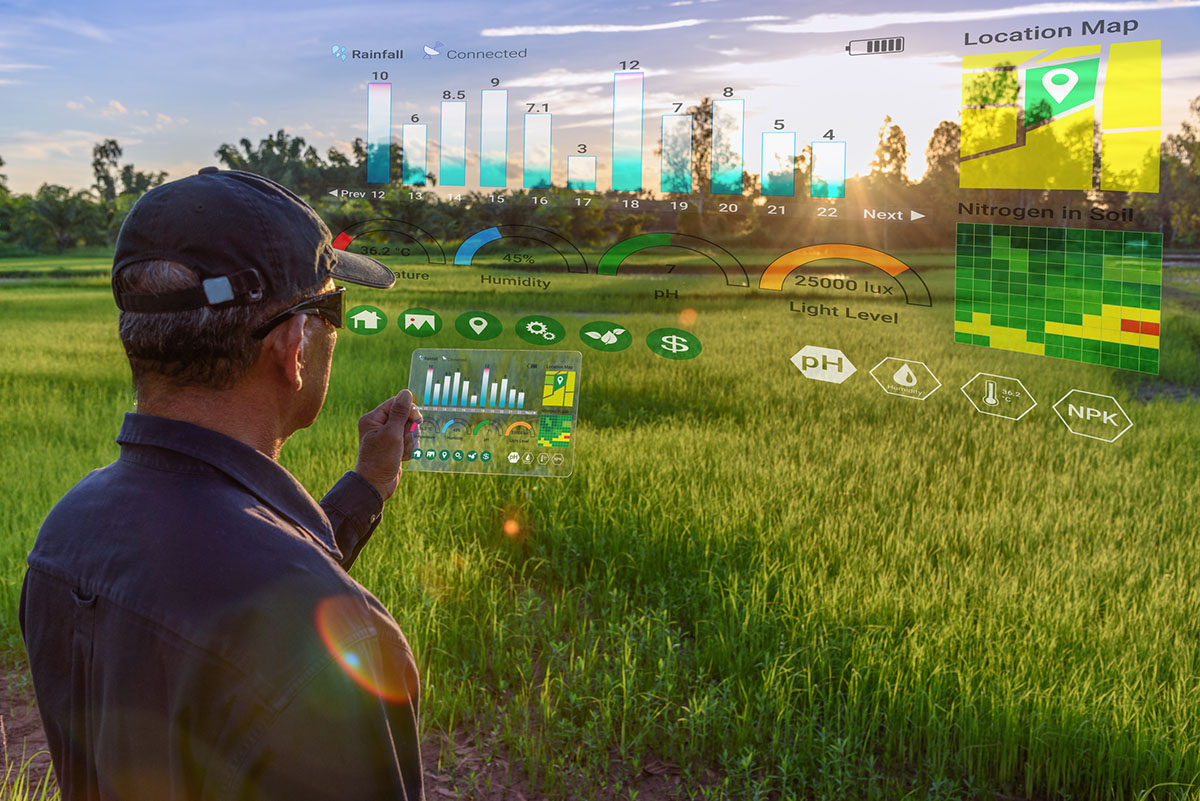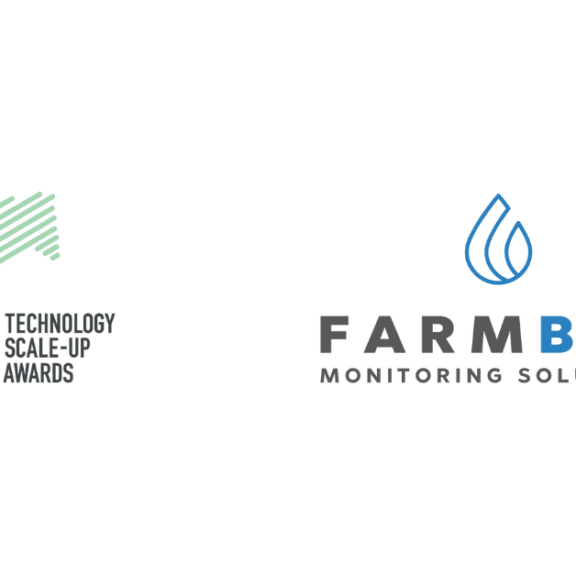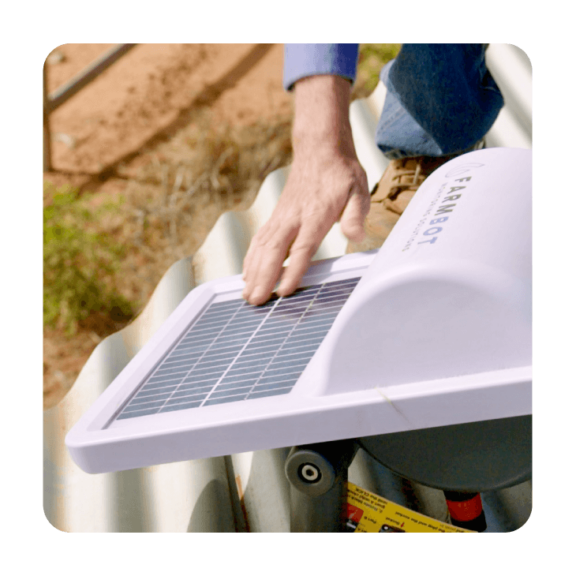Missing the agritech wave
Views and opinions of Andrew Coppin, Managing Director at Farmbot and Chairman of the Australian Agritech Association.
Agritech should be one of our greatest emerging assets in our nation – but we’re not making the most of this enormous opportunity. Why is this, when we’re global leaders in the agriculture industry? How can we grasp this opportunity?
As a nation, we’re rightly proud of our farming industry. Our produce is lauded worldwide for its superb quality – and agriculture plays an important role in our economy, both internally and through exports.
But the industry today faces tough challenges which are echoed around the globe. Challenges are exacerbated by Australia’s climate and remoteness from the rest of the world. But a growing global population is leading to increased demand for food, presenting opportunity whilst simultaneously putting more pressure on natural resources, namely water and land. Extreme weather conditions and natural disasters are becoming ever more common as our climate changes. And all of this is combined with rising costs and strong global competition.
Australian agriculture is so crucial to our economy, but it’s also highly variable, with greater exposure to irregular weather. In some ways, you could argue that our core agricultural industry is dependent on innovation (and adoption) of agritech, to help us meet these challenges, and in doing so, unlock a real opportunity for farmers and our economy.
Australia is perfectly placed to take advantage of and even lead in this growth sector – but so far, we’re lagging behind.
Before I get ahead of myself, what’s agritech?
Agritech supports the agricultural industries with technological innovations that either reduce waste, cost and time or improve productivity, enhance efficiency, boost yield and increase profitability.
Agritech isn’t simply concerned with profit (a compelling factor in its own rite) – it’s about future farming whereby increasing productivity will need to be balanced against sustainability.
The agritech sector isn’t purely about production either, the term supports all stages of the food supply chain, automating processes, creating connectivity and providing streamlined, smart systems and solutions.
The on-farm adoption we’ve seen today is just the tip of the iceberg with farmers around the world utilising smart technology from hydroponics to drones, internet of things (IoT), artificial intelligence (AI), robotics, big data and vertical farming to help them produce more and better with less.
These technologies are set to transform the future of farming across the globe.
A World Government Summit report explains that there are three general agritech trends that they think will have a disruptive influence on the industry:
- Produce created differently using new techniques. Think hydroponics, algae feedstock, bioplastics, desert agriculture and seawater farming.
- Using new technologies to bring food production to consumers. Increasing efficiencies in the food chain with vertical and urban farming, genetic modification and cultured meats, and applying 3D printing tech to food.
- Incorporating cross-industry technologies and applications. Think drones, the IoT, nanotechnology, AI, food sharing, crowd-farming and blockchain.
World leaders in agriculture… but not in agritech
Australian agriculture voices are loud, proud and ambitious. The National Farmers’ Federation is aiming for Australian agriculture to become a $100 billion industry by 2030, and this aim is backed by the government.
But there’s a disconnect between the goals of tomorrow and the innovation culture of today.
You see, to realise this goal, there needs to be a major increase in technology investment, a focused strategy and some serious alignment of thinking. A significant surge in the investment in and adoption of agritech will be crucial in meeting this intent. Not just for our own ability to produce competitively into the future, but so as to create a whole new industry in Australia.
While Australia is a world leader in the agriculture industry, with one of the most secure food supplies in the world and established trade channels and agreements in key locations around the world, particularly Asia and the USA, we’re not leaders in this critical new sector.
Sure, we have excellent research centres and institutes combined with strong government support for research & development (R&D). And yes, our famers are used to dealing with environmental challenges, living as we do in one of the driest regions in the world. And to some extent, our farming sector is used to adopting innovations and clever techniques to boost productivity and respond to our difficult and varied environmental conditions. In many ways, due to the breadth and depth of our farming pursuits and climates, we are the ideal environment for testing, research and development to flourish.
All of this should place us as front runners to lead the field in the agritech industry. But we’re not ahead of the curve when it comes to the agritech sector – and we could find ourselves falling further behind and missing the opportunities it heralds.
Let me be clear, it’s not due to a lack of ideas.
We already have some world-leading innovative agritech solutions in place – but we need to do better to ensure we capture opportunities and secure significant growth in this emerging sector.
There are tens of billions being invested in agritech, and we need to get more involved. We’re falling behind the likes of New Zealand, Israel, Africa and Singapore. Foodtech and agtech startups raised $19.8bn in venture funding across 1858 deals last year. Australia was barely in the mix.
*AgFunder AgriFood Tech Investing Report 2019
Unlocking the agritech opportunities; what we need to do
- An Aligned National strategy: As a country, we’re not organised or focused in our agritech efforts. There are plenty of investment opportunities out there – but we’re not placing ourselves first in the queue for this investment. We need a strong, aligned, national strategy in place, developed in collaboration with all stakeholders, to drive commercial R&D and support investment into the sector.
- Encouraging adoption: We need to engage, enthuse and involve farmers with open dialogue and incentives. Adopting new agritech solutions will only help farmers in the long term, but they can’t necessarily afford to be pioneering and testing new technologies on their own accord. Producers need to be encouraged to adopt new agritech solutions in a risk-reduced way, for example with incentives towards adoption and trials.
- A focus on existing solutions: As well as spending time focusing on brand new, super-early ideas, we need to be proactively scaling and expanding the many existing great solutions around. Both private and public investment should be looking at the current agritech innovation sector for opportunities to collaborate in a meaningful way, support proven success stories and create leaders in the field.
Positive steps forward
There are positive developments starting to take seed across the country to propel the agritech sector forward. Initiatives such as these are vital for driving growth in the sector.
Federal government investment: The government has recently announced an investment of $86 million in digital agriculture. They’re set to establish eight Adoption and Innovation Hubs across Australia and develop a Digital Foundations for Agriculture Strategy.
The formation of the new Australian AgriTech Association: The Australian Agritech Association (AusAgritech) was set up specifically to address the issue of boosting Australia’s agritech industry, and is an important step forward. The Association was created to act as an advocate for and to take part in development activity to grow the sector, as well as to promote Australia’s agritech potential and capabilities in the international market. Bringing together key stakeholders from across the agritech ecosystem to collaborate and work together is crucial to ensure success in this field.
The power of agritech
So, what kind of impact do innovative agritech solutions make for our growers and producers? There are so many different areas that agritech can support – and one example is water management. The agricultural sector accounts for nearly 70% of the world’s water consumption and it’s estimated that better water management could increase global crop production by 20%. **
This is one of the most enduring pain points for Australian farmers, and water management is only getting more problematic with climate change increasing the cadence of drought conditions.
**CDP Global Water Report 2018
It’s no surprise that water management is a key area of focus for agritech. The goal of optimising water management has led to the creation of many agritech solutions, such as Farmbot Monitoring Solutions. Farmbot (of which I am Managing director) is a remote water monitoring IoT technology that provides near real-time visibility of agricultural water supplies to farming operations across Australia. In addition to the ability to remotely monitor water levels, trends and alerts, farmers can remotely monitor water flow, pressure and rainfall, and soon a variety of other functionality like operate pumps, cameras, gates and other machinery remotely. All of these things are done to enhance an operation’s productivity and sustainability and powered by satellite connectivity, which is vital for its use in many of Australia’s remote rural communities.
For large rural holdings this can mean a reduction in thousands of kilometres of driving per week, in turn creating a positive environmental and cost impact, with a reduction in carbon emissions, wear and tear on vehicles, infrastructure and material reduction in occupational health and safety risks.
Some of the best agritech solutions utilise existing tools and technology and repackage them to solve farmers’ problems. Farmbot is a typical example of this, using technologies such as IoT and satellite communications to support agritech capabilities.
The future of Australian agriculture lies with agritech
Agritech will help shore up our agriculture sector and contribute heavily to the NFF’s goal of becoming a $100 billion industry by 2030. Moreover with an aligned strategy, smart investment and impactful action, we could be leading the field, supporting our farmers and boosting our economy by targeting some of the US$500Bn year that is being invested in Agritech goods and services. As a nation, we should be targeting $20bn of that market per annum in addition to our aspirations to grow agriculture.
Australia is perfectly placed to become global leaders in this emerging sector – and we’re starting to take some of the steps that will lead us there. It’s an exciting opportunity for our country and our agricultural industry and I’m looking forward to being part of the journey.







